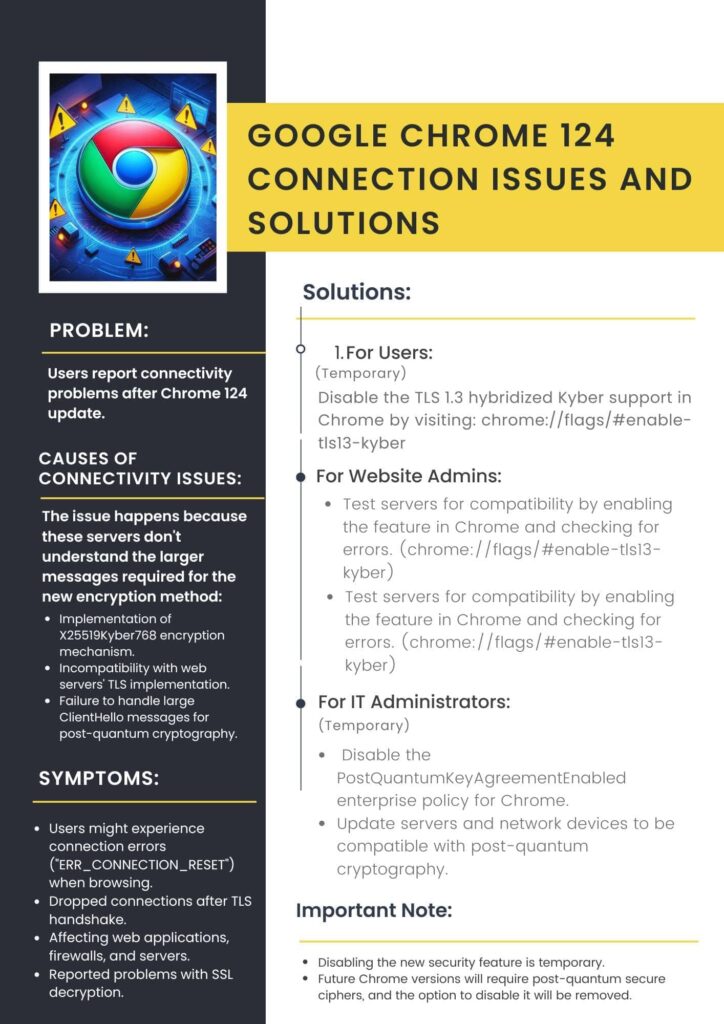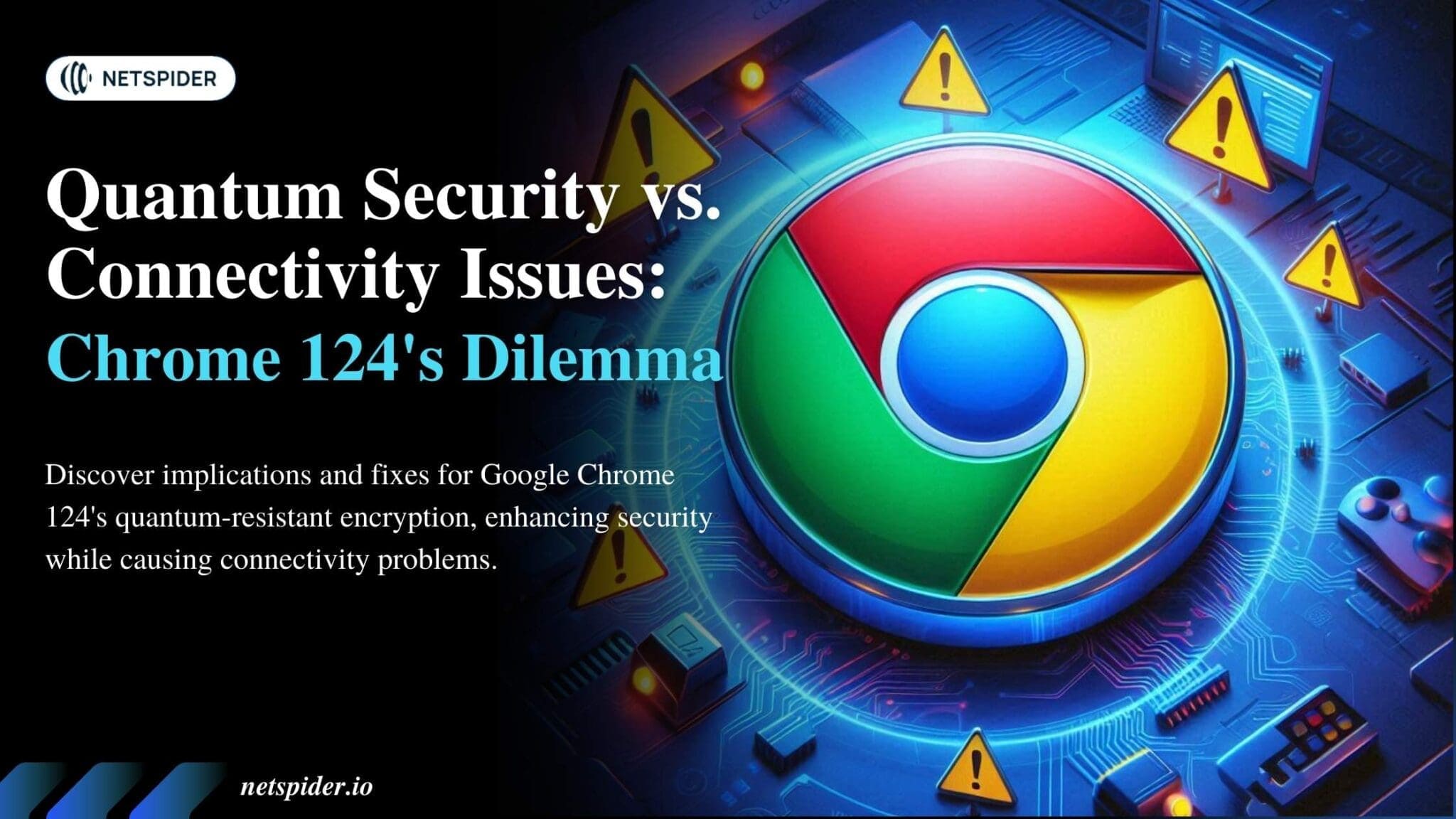The recent launch of Google Chrome 124 unveiled a revolutionary aspect: quantum-resistant encryption. While this advancement pledges enhanced user security, it simultaneously ignites concerns regarding connectivity issues. In this article, we delve into the ramifications of Chrome’s quantum-resistant encryption, focusing particularly on its challenges in terms of connectivity, along with proposed solutions to address these issues.
Quantum-Resistant Encryption: Understanding Connectivity Issues
Understanding’s endeavor to fortify online security against the future threat of quantum computing led to implementing the X25519Kyber768 encapsulation mechanism in Chrome 124. This quantum-resistant key agreement algorithm, Kyber768, protects TLS 1.3 and QUIC connections from potential quantum cryptanalysis.
The Rise of Quantum Threats:
Quantum computing poses a significant threat to traditional encryption methods. Attackers could potentially decrypt encrypted data collected today using future quantum computers, utilizing what’s known as “store now, decrypt later” attacks. Companies like Apple, Signal, and Google have begun integrating quantum-resistant encryption into their networks to combat this looming danger.
Encountering Connectivity Issues: Understanding the Impact
Since the rollout of Chrome 124 and Microsoft Edge 124, system administrators have reported connectivity issues with web applications, firewalls, and servers. The problem arises from web servers failing to adequately implement Transport Layer Security (TLS) and handle larger ClientHello messages required for post-quantum cryptography. Consequently, connections utilizing the Kyber768 algorithm may be rejected by servers unfamiliar with this encryption method.

Navigating Solutions: Addressing Connectivity Issues
Website administrators can diagnose potential issues by manually enabling the quantum-resistant feature in Chrome 124 and testing their servers for connection errors. Mitigation strategies include disabling the TLS 1.3 hybridized Kyber support in Chrome or adjusting enterprise policies. However, it’s crucial to acknowledge that long-term security demands the adoption of post-quantum secure ciphers, necessitating the eventual removal of Chrome’s enterprise policy, allowing the disabling of quantum-resistant encryption.

Conclusion:
While quantum-resistant encryption represents a crucial leap in online security, integrating this feature in Chrome 124 has highlighted connectivity challenges. Through comprehensive comprehension of this encryption method and implementation of suitable mitigation tactics, users and administrators can effectively navigate these connectivity issues, guaranteeing a secure browsing environment in the quantum age.
